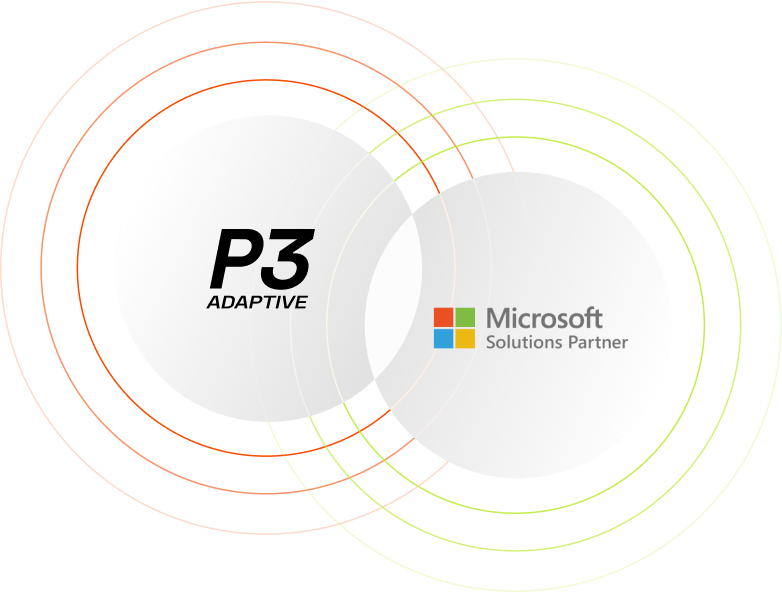The Power BI platform is an incredibly versatile and powerful tool, especially in the hands of those who know how to use it. Let’s dive in and look at everything Power BI can do and why working with Power BI consulting services might make sense for your business.
What Is Microsoft Power BI?
Microsoft Power BI is a comprehensive business intelligence tool that includes top-tier capabilities for visualization, data modeling, data transformation (aka ETL – Extract, Transform, and Load), advanced analytics, data analysis expressions, and artificial intelligence. It is Microsoft’s flagship tool in the BI space.
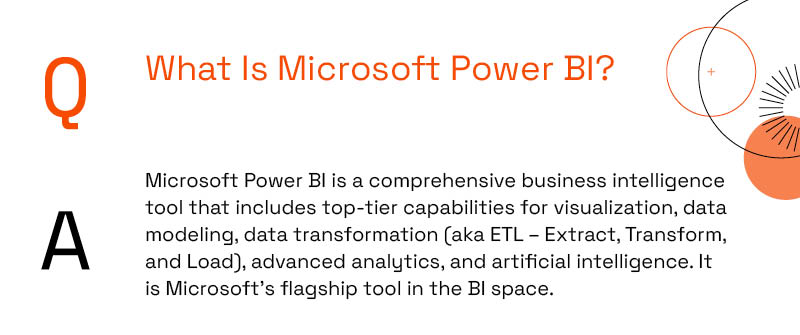
What Are The Unique Benefits Of Power BI Desktop?
Compared to its competitors, Power BI is far more comprehensive in its capabilities across the entire data pipeline. Tableau, for example, is very strong in visualization but much weaker in data modeling and ETL. Power BI is, therefore, a far more flexible and agile tool that allows businesses to quickly pivot their analyses in new directions without requiring new infrastructural investments that the other tools almost universally require.
In addition to being by far the most comprehensive and agile of the modern BI tools, Power BI is also deeply integrated with the rest of the Microsoft platform, from Office and SharePoint to Azure and Fabric. None of Power BI’s competitors bring a similar network of integrated benefits.
Somewhat counterintuitively, given its many advantages, Power BI is also far more affordable than its competitors, costing a fraction of the price of other tools. Combined with its comprehensive support for the entire BI lifecycle and its superior agility, Power BI implementation costs are often an order of magnitude more economical than projects executed with other tools.
In short, Power BI:Is more comprehensiveIs more flexibleIs more agileOffers more integrationsIs more affordable
Let’s be clear: There’s a WIDE range of what you’ll find in terms of Power BI consultants. Given that it’s very easy to connect Power BI to a single raw data source and immediately begin building visualizations and dashboards, the barrier to entry to advertising oneself as a Power BI consultant is low, and there are no regulations for power BI training. While it’s a very good thing for aspiring analysts that the tool has a gentle onramp in terms of learning curve, a frightening percentage of so-called Power BI consultants possess only surface-level knowledge of the toolset.
What Do Power BI Consultants Do?
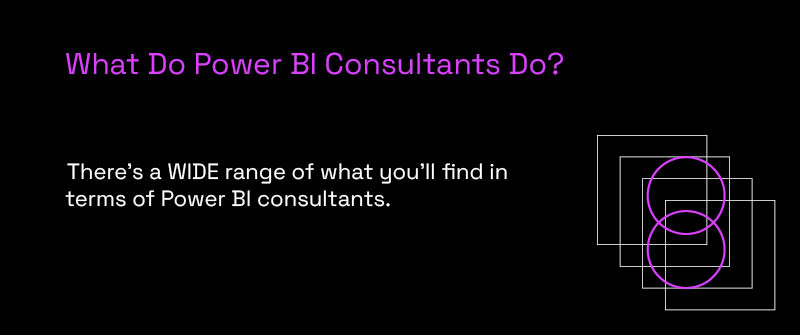
In the hands of those with skin-deep expertise, Power BI rarely delivers on its amazing promise. We’ve seen this first hand when we’ve been hired by companies who are considering abandoning Power BI, and we quickly discover that they were misusing its capabilities – either due to a lack of internal expertise or because they hired a consultant who overrepresented their own expertise. The right Power BI Consultants completely change this. Power BI consultants assist in Power BI Implementation, building Power BI dashboards, and analyzing and visualizing data. When Power BI consultants apply Power BI properly, the client quickly sees data wins – often within a week or two – that eluded them for months or years prior.
Power BI Consultant Skills
So, what are the skills that differentiate the pretenders from the experts? Note that these skills are important whether you are aspiring to become a Power BI consultant and/or land a Power BI consulting job but also if you are looking to hire a Power BI consulting company.
A Power BI expert consultant:Is a good communicator and is able to understand the business problems facing the clientAsks a lot of questions about what the stakeholders are trying to achieveUnderstand the power and flexibility of star schema data models and not just flat-table viewsKnows how to use Power Query to clean and shape source data before ingesting it into their Power BI data modelsIs skilled at the DAX language, allowing them to implement a wide range of business logic into metrics and Key Performance Indicators (KPIs) – both in DAX calculated columns and in DAX measuresKnows their way around the Power BI cloud service, including security, gateways, and scheduled refreshIs able to move quickly enough that the client can participate in semi-real time during the Power BI implementation, replacing the reliance on expensive and slow requirements docs with lightweight and crisp communication (whether via live meetings, phone calls, or instant messaging)
How Much Does Power BI Consulting Cost?
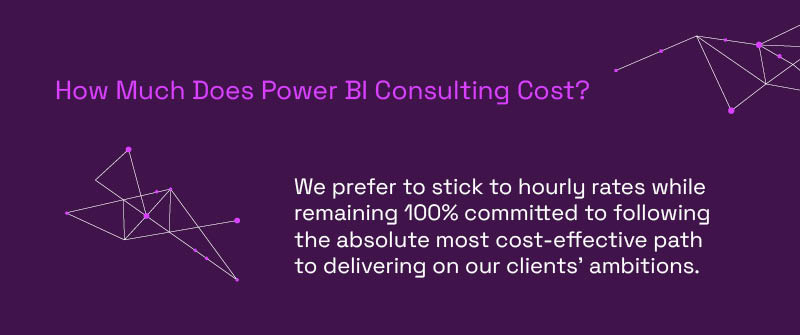
Power BI consulting rates can vary quite a bit. Some of the authorities in the space charge more than $500 an hour, whereas offshore resources can be priced under $50 an hour. Some Power BI consultants avoid hourly rates altogether and charge per-project fees, but in our experience, that only works well in narrow circumstances when the project is 100% transparently clear from the beginning. In our experience, most Power BI implementation projects inherently involve the discovery of unknowns – both obstacles AND opportunities – that were invisible before getting started. Consultants who charge per-project rates most often insulate themselves against the risk of the unknown by significantly padding and inflating their project cost rates, which can create a winner/loser dynamic relationship with the client.
We prefer to stick to hourly rates while remaining 100% committed to following the absolute most cost-effective path to delivering on our clients’ ambitions. We’d much rather win our clients’ trust – and future business – than extract a predatory margin and damage the relationship.
What Is Power BI Implementation?
A “Power BI implementation” can mean one of two different things: the focused creation of a dashboard or set of dashboards to address a specific purpose or the overall adoption of Power BI as an organization’s preferred BI tool.
Meaning One: Focused Creation of Power BI Dashboards
Focused Power BI dashboard implementations deliver immediate value to the client organization. Still, they are often the best way for an organization to evaluate Power BI for potential adoption as the tool of choice. As hinted above, these focused implementations begin with a “mind meld” between consultant and client oriented around the client’s needs and ambitions for the project.
What is the status quo? What are the pain points? How do we expect things to improve if we implement the dashboard(s)? Who will be using them, and what decisions will they be using them to make? What are the data sources that will be required, and where do those data sources “live” today?
From there, actual Power BI development can begin, taking place at three distinct layers – the reports/dashboards/visualizations layer, the data model layer (which feeds the visuals), and the ETL Power Query pipeline (which feeds the data model). Even though these layers form a natural sequence of ETL -> Data Model -> Visuals, Power BI is at its best when the consultant can rapidly iterate through all three layers nearly simultaneously.
Power BI experts think backward from the desired visuals and immediately see the data model, and ETL required to provide it. Sometimes, a single end goal can be achieved nearly effortlessly with a savvy change in one layer while being prohibitively expensive if shoehorned into one of the other two layers. If a Power BI consultant rigidly locks themself into a sequential or waterfall approach to the three layers, these efficient solutions elude them.
Meaning Two: Adopting Power BI
Suppose implementation instead means adopting Power BI as the organization’s preferred BI tool. In that case, the focus is obviously not on any single need but rather on instituting an effective org-wide culture and capability. Identification of audiences and roles is an important and often neglected first step. Who will be your authors, your consumers, your administrators, and your invested stakeholders? Your authors will be your Power BI developers but also your primary Power BI ambassadors – the advocates for the tool as well as the go-between where all of the other audiences’ concerns meet. These authors will be the primary targets of your adoption plan.
Power BI instructor-led training and/or pre-recorded Power BI courses will be valuable primarily to them, and these Authors are also often the right people to cooperate with Power BI-partner consulting firms on specific projects in the early going. In our experience, training is most effective when immediately followed by the execution of a Power BI project in collaboration with a more seasoned Power BI expert.
How Do I Choose The Best Power BI Consulting Provider?
It can be hard to say who is the best consultant for your needs objectively. But there ARE definitely things to look for.
The best Power BI consulting firms:
- Never lock you in. If they want six-figure commitments up front, they prefer their clients to be captured.
- Are transparent. They don’t hoard knowledge to gain advantage of you.
- Are supportive of a hybrid model. If you want to understand how something works so you can do it yourself in the future, they are happy to explain it and teach you how to do it.
- Are focused on the improvements you are trying to make as a company and not on the tech itself. Within the first week of engagement, you feel like you’re talking to a business ally (who happens to be great at tech) and not to a software developer or IT professional.
- Hire only the very best consultants. At P3, we hire less than 2% of our applicants because we need them to be highly proficient at so many distinct skills, such as the three phases of Power BI development, business acumen, and communication skills, change management, project management, and management/governance strategy.
If that sounds like a lot to look for, good news. Personally, we think you’ve already found the best right here (heh heh).
How Do I Know My Company Could Benefit From Power BI Consulting?
Once your company reaches around $25 million in annual revenue, Power BI consulting provides more than enough ROI to be a significant net positive, as long as you’re hiring the right kind of firm. We like to joke that “if there’s money at stake in your organization, and you have data, we can help.”
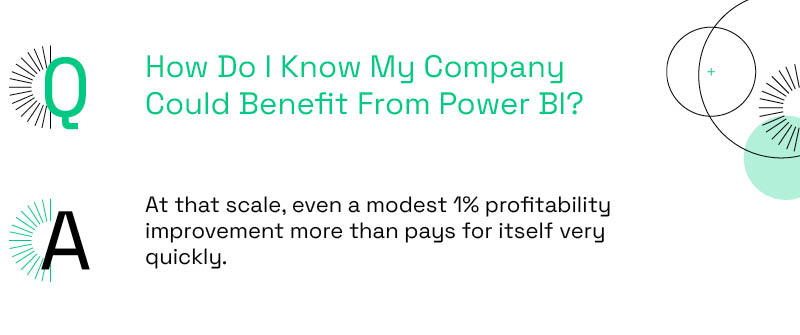
At that scale, even a modest 1% profitability improvement more than pays for itself very quickly. Organizations of that size tend to possess already more than enough data richness to mine for value (and sufficient complexity to overcome). Those sorts of gains are nearly always attainable.
Other specific indicators include: Your organization spends significant manual effort to produce reportsYou frequently depend on spreadsheets to power your decision-makingYou have to run multiple reports – often from different systems – in order to try to get the whole pictureNew and valuable questions take so long to answer that you learn not even to ask themYou struggle to answer the question, “Why do these reports, dashboards, etc. exist?”You have an existing BI system (including Power BI), but it never is able to provide the information you actually needIT is responsible for all reporting, and they are buried under a backlog and slow to deliverDifferent departments within your organization frequently disagree on the values of important metrics, or you’re not sure you can trust the reports you’re givenEven when you have trustworthy metrics, you struggle to drive improvement in those metrics or to formulate strategies for improvement
How P3 Adaptive’s Power BI Consulting Team Can Help with Business Intelligence
At P3 Adaptive, we know just how useful Power BI can be, especially when wielded by experts. That’s exactly why we have spent years cultivating a competent and service-oriented Power BI consulting team of experts to help you get the most out of your Power BI experience. With our help, you can unlock data intelligence that not only gives you a competitive edge now, but keeps you ahead of the game. To learn more about how we can help your team create Power BI solutions, contact us today.
